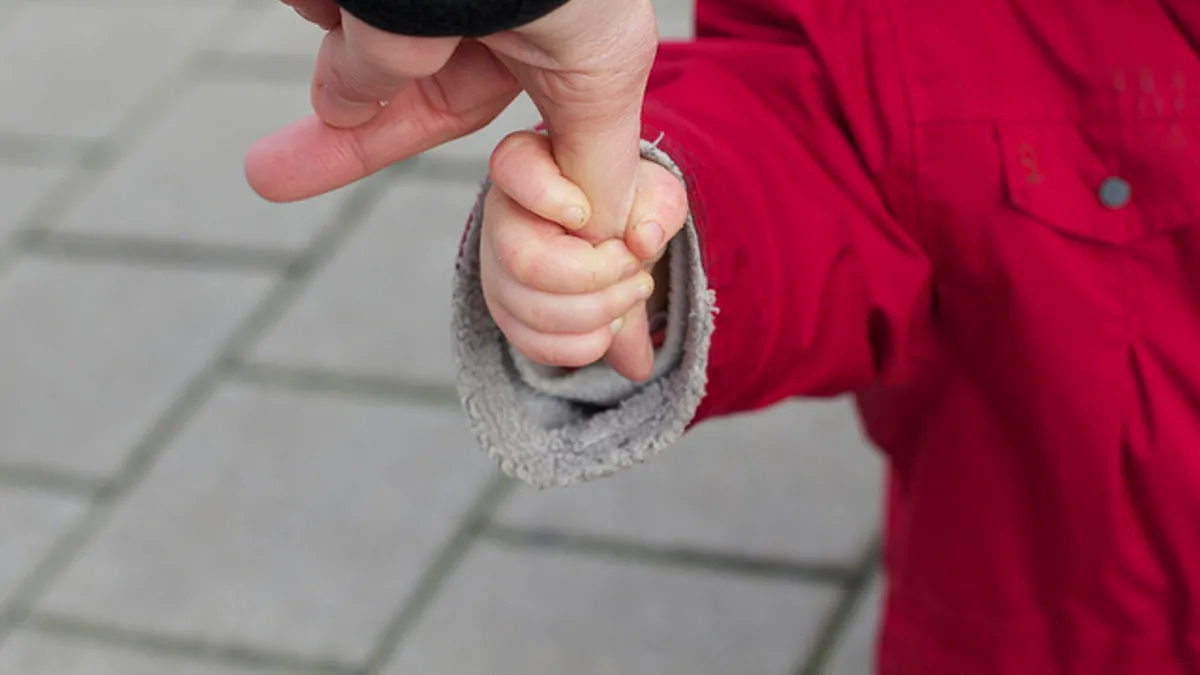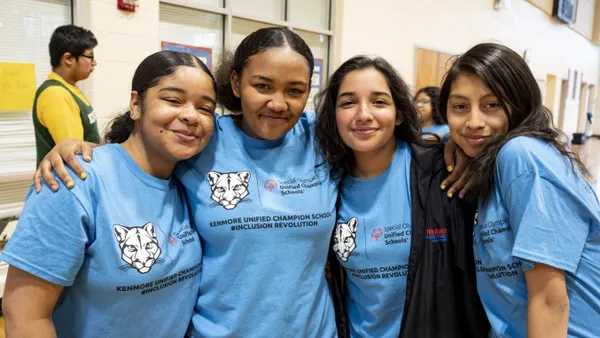Mothers dropping off their children at one of Public Prep’s elementary campuses — in either the Bronx, New York, or the Lower East Side of Manhattan — often have a much younger child with them in a stroller or carriage.
It’s a scene that would often leave Ian Rowe, CEO of the five-school network of single-sex charters, wondering what his schools — and the K-12 system in general — could do to better prevent some of the developmental and other delays seen in the schools’ pre-K and kindergarten students.
“There are large numbers of very young single mothers raising very young children,” Rowe said last week at a panel discussion hosted by the American Enterprise Institute (AEI) in Washington. “I was constantly thinking, how could we reach that toddler, who is still three years away from our Girls Prep or Boys Prep school?”
Then he discovered the Parent-Child Home Program (PCHP), a 50-year-old home-visiting program in which trained “early-learning specialists” conduct twice-weekly, 30-minute home visits to low-income families over a two-year period, beginning when the child is 18 months old. Each week, the families receive a book or an educational toy, and the specialists focus on modeling interaction with the child.
A year ago, the charter network launched a pilot with 30 families in which the program is delivered to younger siblings of current Public Prep students. And plans are underway to expand the partnership, Rowe said.
“There is a transformative power in reaching families before their children enter a classroom,” Sarah Walzer, CEO of PCHP, said during the event. While Public Prep won’t know for a few years how the visits benefit this particular group of children, Walzer presented data on both short- and long-term outcomes of the program. These include being 50% more likely to be considered ready for kindergarten, 30% more likely to graduate from high school, and 50% less likely to be identified for an Individualized Education Program.
“If we can negate those negative experiences by providing those positive experiences for the child and the parent before they start school, we are going to significantly reduce the number of children who are referred to special education services — a huge cost savings for school districts and for society,” Walzer said.
'Before kids arrive in kindergarten'
While Public Prep is targeting the program specifically to students’ siblings, the partnership is an example of how K-12 schools can play a larger role in providing home-visiting services to families with young children — and use federal education funding, such as Title I dollars, to do it, noted Katharine Stevens, a resident scholar at AEI who heads the think tank’s early-childhood program.
She added that it’s “striking” how many time the Every Student Succeeds Act uses the words “from birth” to describe the potential reach of schools’ or districts’ early education efforts, while the term was not part of the No Child Left Behind Act.
“We know that good schools are crucial to children’s success, but we also know that education really means human development, not schooling,” Stevens said. “And a substantial body of science now strongly suggests that the essential foundation for educational opportunity is laid not at age 5 or 4 or even 3 — but beginning at birth.”
The AEI event also follows a recent report showing that while 300,000 families received home-visiting services in 2017, millions more could benefit from such early intervention models.
More sophisticated data tools can also help school and district leaders identify which neighborhoods they might want to target if they form a partnership with a home-visiting organization. In California, for example, the First 5 Association, a membership group for the state’s 58 county-level First 5 agencies, and the Children’s Data Network, based at the University of Southern California, have created the California Strong Start Index.
Focusing on indicators, such as being born to parents with at least a high school diploma and being in a family that has access to healthcare, the index provides profiles at the census tract level to help providers better target their services.
“The power of the Strong Start data is that it shows that many of the issues that come up in the K-12 setting are apparent even when children are born,” Moira Kenney, the executive director of the First 5 Association, said in an email. “This provides an opportunity to have a conversation about how school districts can be involved with organizations and institutions that provide services before kids arrive in kindergarten.”
Most states and a growing number of municipalities have built and expanded public pre-K programs over the past two decades — and some have made their programs universally available, regardless of family income.
Chester E. Finn Jr., an education policy analyst and the president emeritus of the conservative-learning Thomas B. Fordham Institute — who also spoke at the event — said that there’s a lot of “political oomph” behind adding another year of school to the K-12 system. But he argued that Public Prep’s partnership with PCHP is a better approach because it is “as close to the cradle as you can get” and targets the most “severely disadvantaged kids.”
“The push for [universal pre-K] is at war with the greatest needs we’ve been talking about,” he said.
Another barrier to such efforts is that educators are often “ambivalent” about working with low-income parents, said Ralph Smith, the managing director of the Campaign for Grade-Level Reading, which is now active in 300 communities.
“Those kids are not going to walk themselves to the program,” Smith said, adding that it’s important to “engage parents and acknowledge them as co-producers of good outcomes for their kids.”
Rowe said that instead of looking to “take on more responsibilities,” the pilot is an effort to find a strong partner that can support the child’s learning and the parent’s skills as well.
Finally, Walzer noted that turnover among superintendents is another challenge. Leaders might not be eager to allocate Title I funds toward a program for children who won't even be in kindergarten by the time they move on to another district, she said.
Still Thomas Gentzel, executive director and CEO of the National School Boards Association, said that there has been "a big transformation about how school leaders think about this issues. I think we’re seeing more and more interest in school districts trying to collaborate with early learning generally."








 Dive Awards
Dive Awards















